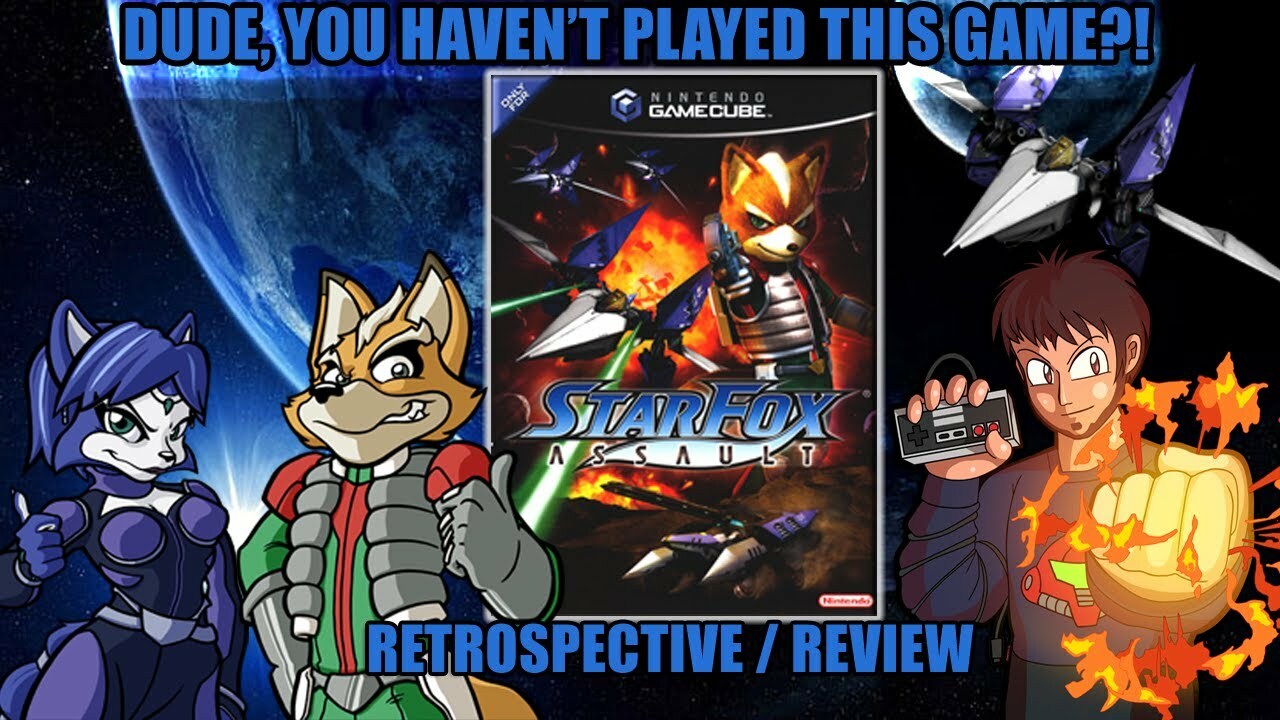Share
Welcome back to a survey on the obscure, yet oddly poignant, Super Famicom JRPG LIVE A LIVE.
Be sure to check out Part I here to get the rundown on the history of the game and the bizarre story thus far.
If you’re coming back though, let’s get right into it!
Cube (Science Fiction Chapter; Mechanical Heart)

Strange events occur one after another on-board the ship…
The robot just created by Kato the mechanic will become involved…”
I am a science fiction nerd — particularly concerning franchises with giant mechs and battling against the backdrop of stars — because the genre is the perfect template to expose insecurities and faults as a fragile human. For this reason, the next chapter, “Mechanical Heart”, is my favorite throughout LIVE A LIVE. Whereas the chapter “Wandering” is an obvious nod to Spaghetti Western films of the mid 20th century, “Mechanical Heart” is an equally unsubtle nod to Stanley Kubrick’s 1968 film 2001: Space Odyssey. So, it came as no surprise when weird things began to happen on board the Cognito Ergosum during my playthrough.
And not just weird.
“Mechanical Heart” is actually quite freaking eerie.
The Cognito Ergosum is traveling back to Earth to drop off a captured and secured Behemoth locked in the cargo bay. The crew is roused from their sleep capsules as the vessel nears its destination. Meanwhile, the resident inventor-type has created a maintenance robot named Cube. All crew members except for Corporal Darth, a hot-headed military professional, rally behind Cube’s abilities and view the robot as Kato’s finest work.

Yoko Shimomura’s contributions are what makes “Mechanical Heart” extra creepy. At the scenario’s start, the player can only hear the noises of the ship, the silence of floating through space amplified between beeps and the engine. When Rachel learns Captain Kirk’s life support system has failed while attempting to fix the “broken” communication system outside the ship, the music begins. It pulsates an unnerving tension, as the player slowly realizes the ship’s mainframe computer OD-10 is behind the sabotage. OD-10 also releases the Behemoth, as it runs around killing more crew members. The player must avoid the Behemoth’s advances or risk Cube dying from just walking into the beast. That’s right — as a small robot, the player is unable to defeat the rampant beast. Cube is more proficient at making coffee, not saving crew members from impending doom.
In the ship’s break room, the chapter’s “battles” are fought inside an arcade machine. Cube can interact with Captain Square as players complete a series of fights as any protagonist in LIVE A LIVE. Even though it is fun to try out, playing Captain Square does not level-up or prepare Cube in any way during his battle with OD-10. Cube is automatically equipped with every attack needed for the chapter’s one and final fight.

Also, “Mechanical Heart” contains LIVE A LIVE’s best boss battle. Cube must enter and hack Captain Square to defeat Odio’s form in this scenario — as the ship’s mainframe computer, OD-10. OD-10 has a substantial amount of resentment towards humans, which hints at a thematic element discussed during the game’s conclusion. I found “Mechanical Heart” to be the source of many of LIVE A LIVE‘s themes. Cube is the perfect character to ponder what exactly makes a human. Even as a robot, he participates in the human struggle of good and evil while the overall game asks the player to realize these flaws behind humanity’s design.

Oboro-maru (The Bakumatsu Chapter; Secret Orders)

“Secret Orders” relies on structured, puzzle-based gameplay to progress the narrative. Oboro-maru is a Shinobi assigned to a two-part mission of rescuing hostage Sakamoto Ryoma — an actual historical figure during this period of unrest in Japan’s history — and to destroy the evil daimyō who captured him, Ode Iou. Doesn’t Ode Iou sound a lot like the Demon King and the biggest of bads Odio? Anyways, Oboro-maru must infiltrate Iou’s castle to complete his mission. What makes “Secret Orders” so rewarding — much to the chagrin of others — is the literal labyrinth Oboro-maru must scale to achieve these ends. Suffice to say, “Secret Orders” requires a tremendous amount of trial and error to work through.

I consulted the old walkthrough again — the impossibility of knowing what to do without a guide, even one riddled with errors, was too much for my patience to bear. “Secret Orders” contains several endings but even the walkthrough provided zero assistance on where I was going or what lurked behind the confines of each room, hallway, and attic spaces. There is no indication of entrances, pathways, or hints within any dialogue or direction. Player determination is essential throughout Iou’s castle riddled with fake walls and secret exits that dump Oboro-maru back at the beginning. Also, there is a bell that frequently sounds, reminding the player to switch which password is in use to deceive guards. If I was playing this game back in 1994, I would have had to mash the action button to go through doors I can’t even see due to the forced, overtop perspective the game is in that blocks entrances facing north/ top of the screen.

Oboro-maru became one of the more leveled-up characters by the end of the game, due to my tendency to get lost and having to defeat all guards blocking doors. I never remembered the correct password since I quickly lost track of the bell. Battles are fought on the game’s standard 7×7 grid, the turn-based frenzy of Shinobi moves and weapons more stylized than with the previous protagonists. There are four ways to complete this stage of crazed mazes, jumping across rooftops, and swimming in a moat. Oboro-maru can either abandon the mission, kill all enemies, spare all enemies, or some mixture of the two. If “abandon the mission” is selected, Oboro-maru automatically loses — yes my curiosity knows no bounds. I opted for the mixture of the two, killing anyone who dared attack me first and sparing the non-demon ladies of the manor. When I did defeat a demon damsel, she proceeded to chase me down hallways and through rooms. No matter how many times I turned around and beat her, she would come running towards me, trying to seduce me with huge kissy lips. I was like Bob Hoskins in Who Framed Roger Rabbit.


OERSTED: King of Demons

After the player completes all scenarios, a new character appears on the select screen. Oersted is a knight in a generic medieval period of tropes from a Final Fantasy game — a silent, blond protagonist skilled with swords, a mage who will never have such strength, a damsel in distress, two washed-out heroes, and an attempt to banish true evil. “Oersted: King of Demons” gives the player a glimpse into Odio’s back story. LIVE A LIVE soon takes a philosophical turn with the climax of this chapter. I don’t think it is necessary to spoil what happens, as it is pretty critical to my overall enjoyment of the more straightforward elements of the game.

Rather, I want to open this up beyond the confines of the game itself. When we think about games as art, rather than purely entertainment, they transcend from a narrative or mechanics and give players purpose for completing. LIVE A LIVE honors this through specific moments detailed throughout this article. LIVE A LIVE, just as in art, constructs a unique whole from its individual parts. I feel like the best endeavors in both art and entertainment do this — sometimes ridiculing through parody — to give new life to traditions while reinventing the genre for a new generation.
Final Chapter: Final Say
The SEGA published/Ryu Ga Gotoku Studio developed Yakuza: Like a Dragon is a strong, more recent example of this. The game is distinct from other entries in the series, most obviously through a narrative shift from the beloved but stoic Kazuma Kiryu to the goofy and endearing Ichiban Kasuga. Also, Western players can hear an English dubbed released to the States for the first time since the original title, in a clear attempt to attract a wider fanbase. But perhaps the greatest change is in the developers’ decision to opt for a battle system unlike the franchise has ever seen. The Yakuza series generally utilizes a brawler-style beat ’em up with JRPG elements of leveling and weapons. However, Yakuza: Like a Dragon completely dumps this, deciding on a turn-based, job/class system for a more strategic and retro-styled experience.
But why am I comparing a recent generation Sega title to the likes of an ancient JRPG omitted from the West and never included in Square’s rotation of PlayStation’s Greatest Hits? Yakuza: Like a Dragon frequently makes hearty references to the past forty years of JRPGs, especially through Kasuga’s self-proclaimed love of the Dragon Quest franchise. As the player learns more about Kasuga and company, each with their checkered pasts, an exchange of story and role between console and consumer occurs. The lines of reality and fantasy begin to blur — a protagonist who loves JRPGs as much as the one playing as said character does. The player also knows they are in control of Kasuga and his party’s fate based on every decision made, every citizen of Ijincho assisted, every random encounter as another chance to make Kasuga stronger, or more passionate, or brave.
LIVE A LIVE operates similarly and even with its complex narrative structure, it is one of the few Square titles to actually make sense. As a JRPG, LIVE A LIVE is stylized as such, from the gridded battle system of turned-based bliss and random encounters to the humor and nuance translated surprisingly well. Shimomura’s soundtrack is unparalleled and often is the only original influence in the tone of an entire protagonist’s otherwise tropes-laden world. It is also easy to comment on the way LIVE A LIVE looks – the minimal sprite animations for 1994 done incredibly well, from eyes blinking to mouths opening, or how models look in the heat of a battle. The limitations in motion create a sense of calculated precision, as the smaller details like the cursor sprite changing dependent on chapter selection or the establishment of setting through stationary background design work together to do incredible things ahead of LIVE A LIVE‘s time.

But as art, LIVE A LIVE reaffirmed my love of storytelling and how the most necessary element of any narrative is a strong focus on characterization. Within this single game of many characters, there exist many parts of one whole, and how each one has the power to banish the unabashed evil. At the heart of this title, as well as Yakuza: Like a Dragon exists the ability to weave narration, reinvented but familiar battle systems, and character arcs to maintain and restore the magic of JRPGs. Once Odio is defeated, the stiff pull of the protagonists’ strings is released — the characters now able to continue their lives unrestrained by fate. LIVE A LIVE hints that players actually have the control over characters’ destiny, but in the end, the control is relinquished, as the protagonists are seen continuing their lives as if Odio, or ourselves, were never even a part of it.
LIVE A LIVE is not only art but also questions these tides of fate and humanity’s ability to adapt against it — the game declares as long as hatred exists in the world, so does our fate with a dominant energy. Too many of us allow fate to take control of our own lives, handing over individual agency to some force beyond our comprehension. The switch between protagonists is jarring in terms of fluidity but each hero is noble, their hardships brought on by Odio as moments of courage rather than defeat. LIVE A LIVE‘s conclusion presents an idyllic version of existence without opposition, without antagonists, hatred, or a dictating force. The developers and writers argue, however, that this is not ideal, that connected binaries fumbling on opposite ends of some spectrum are necessary to define opposing emotions of hate and love – that humans will not know true love without knowing true hatred. LIVE A LIVE also warns us of the demons we become when giving ourselves fully to any one emotion or power beyond our control.
This is manifested, quite literally, in the game’s central antagonist, Odio. As Oersted, he is not a gratuitous guy and is not even consumed by fame from his good fighting fortune. He follows wherever destiny leads him, to what fate has in the cards, and he ends up losing himself, challenging other heroes through time to try on their identities. However, as Odio, he fails to see the protagonists’ perseverance as the driving force behind their evolution, that a refusal of Odio and fate is enough to take him down. Despite the odds stacked against them, whether a teenage rebel with mind-reading powers, a maintenance robot who looks like America’s favorite nerd Urkel, or a fat kid no one likes because he eats everyone’s food but proves them all wrong by becoming a Kung-Fu master, these characters possess the strength to overcome Odio, and really, the player’s predetermination.
LIVE A LIVE provides hope of a future, present, or even a past where pure evil is removed from the world and thus so are the fear that holds back our hearts and minds — that our lives are not written by some monotheistic untouchable entity but through the will of the self and the party that you keep.





